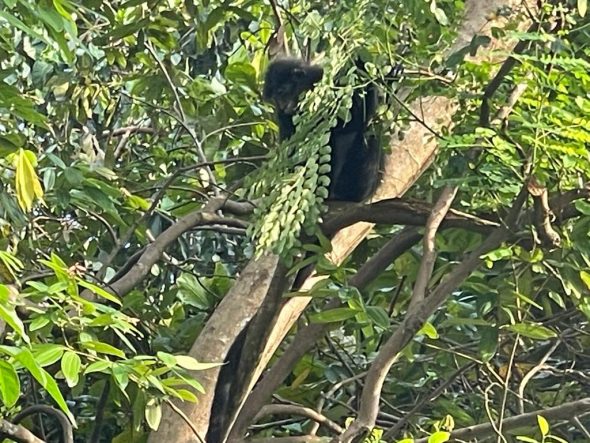

The Raffles’ Banded Langur (Presbytis femoralis femoralis) is also known as the Raffles’ surili and the banded leaf monkey. It is an Old World Monkey that is native to Singapore. The monkey measures approximately 60 cm from head to body and the long, non-prehensile tail measures up to 84 cm. At last estimate about 60 of them live in the Central Catchment Nature Region. They are seldom spotted or encountered.
These diurnal and arboreal creatures gather in groups of up to 6. The groups usually comprise a male and females and juveniles. The babies are usually white or grey, though orange ones have been sighted too. The diet is made up of leaves, seeds and fruits and the occasional insects. As they prefer to inhabit dipterocarp forests, the creatures are critically endangered as a result of habitat loss and scarcity of food plants.
Dr Ow Boon Hin was blessed with the sighting of 2 individuals at the Lower Peirce Reservoir on 20 January 2022.
Video shows 2 monkeys feeding on the tree top. The long tails are used as extra props to help them balance themselves. Towards the end of the video the monkey is seen with its tail twined lightly around the tree.
All photos and video © Dr Ow Boon Hin.
Article by Teo Lee Wei
References:
- Biodiversity of Singapore: An encyclopedia of the Natural Environment and Sustainable Development © 2011 Edited by: Peter KL Ng, Richard T. Corlett and Hugh T. W. Tan
- Guide to the Threatened Animals of Singapore © 1995. Edited by Peter K.L. Ng
- https://en.wikipedia.org/wiki/Raffles%27_banded_langur








